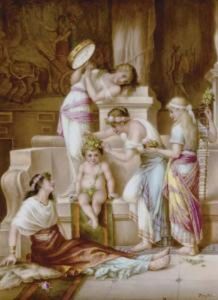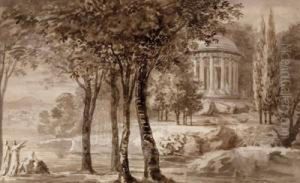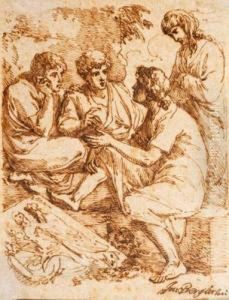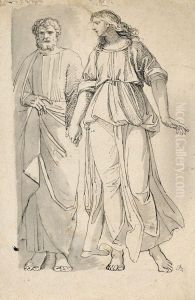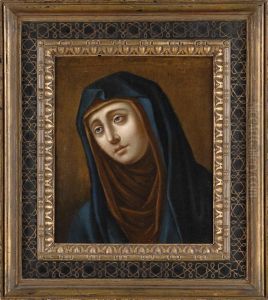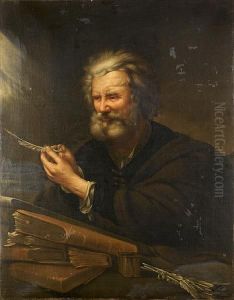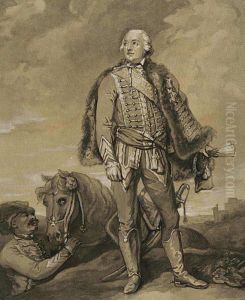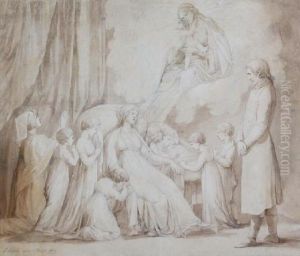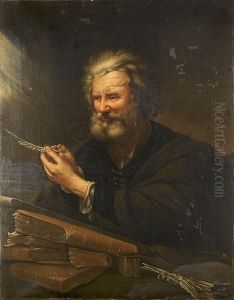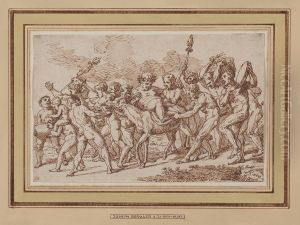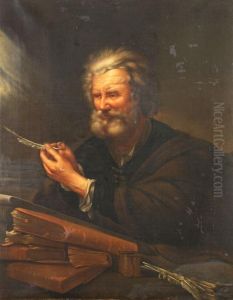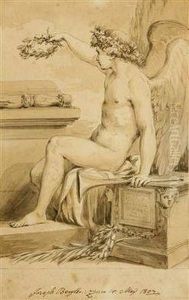Joseph Ii Bergler Paintings
Joseph II Bergler was an influential painter and engraver born in 1753 in Salzburg, then part of the Holy Roman Empire. He is often associated with the late Baroque and early Neoclassical periods in European art. Bergler's early life was marked by his education in the arts under the guidance of his father, Joseph Bergler the Elder, who was also a respected painter. This familial environment nurtured his talents and set the foundation for his artistic career.
After his initial training, Bergler furthered his education by traveling to Italy, a common practice among artists of his time seeking to study the works of the Renaissance and Classical masters. In Italy, particularly in Rome, he was deeply influenced by the works of Raphael and other Renaissance artists. This period was crucial in shaping his style, which combined the grandeur of the Renaissance with the emotional depth of the Baroque.
Bergler's reputation grew, and in 1786, he was called to the court of the Prince-Archbishop Colloredo of Salzburg, where he worked on various commissions. However, the political upheavals of the era, including the Napoleonic Wars, influenced his movements and career. In 1800, he relocated to Prague, where he became a central figure in the city's artistic life. He was appointed the director of the newly established Academy of Fine Arts in Prague in 1806, a position he held until his death in 1829. During his tenure, he was instrumental in reforming the academy's curriculum, emphasizing the importance of drawing from life and the study of classical art, which had a lasting impact on art education in the region.
Bergler's work encompasses a range of subjects, including religious themes, mythology, and portraits. His paintings are characterized by their detailed execution, balanced composition, and the use of light to create depth and emotion. Despite his significant influence in his time, particularly in Central Europe, Bergler's work is less well-known internationally compared to his contemporaries.
Joseph II Bergler passed away in 1829 in Prague. His legacy is preserved in the collections of various European museums and institutions, reflecting his contribution to the transition between the Baroque and Neoclassical periods in art. His role as an educator and director of the Prague Academy of Fine Arts also ensured that his impact would be felt by generations of artists to come.
